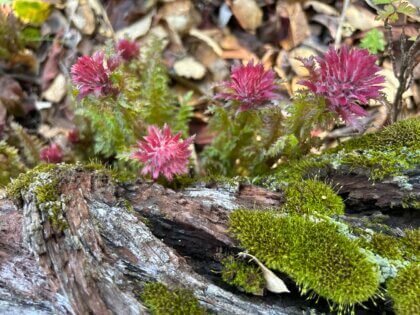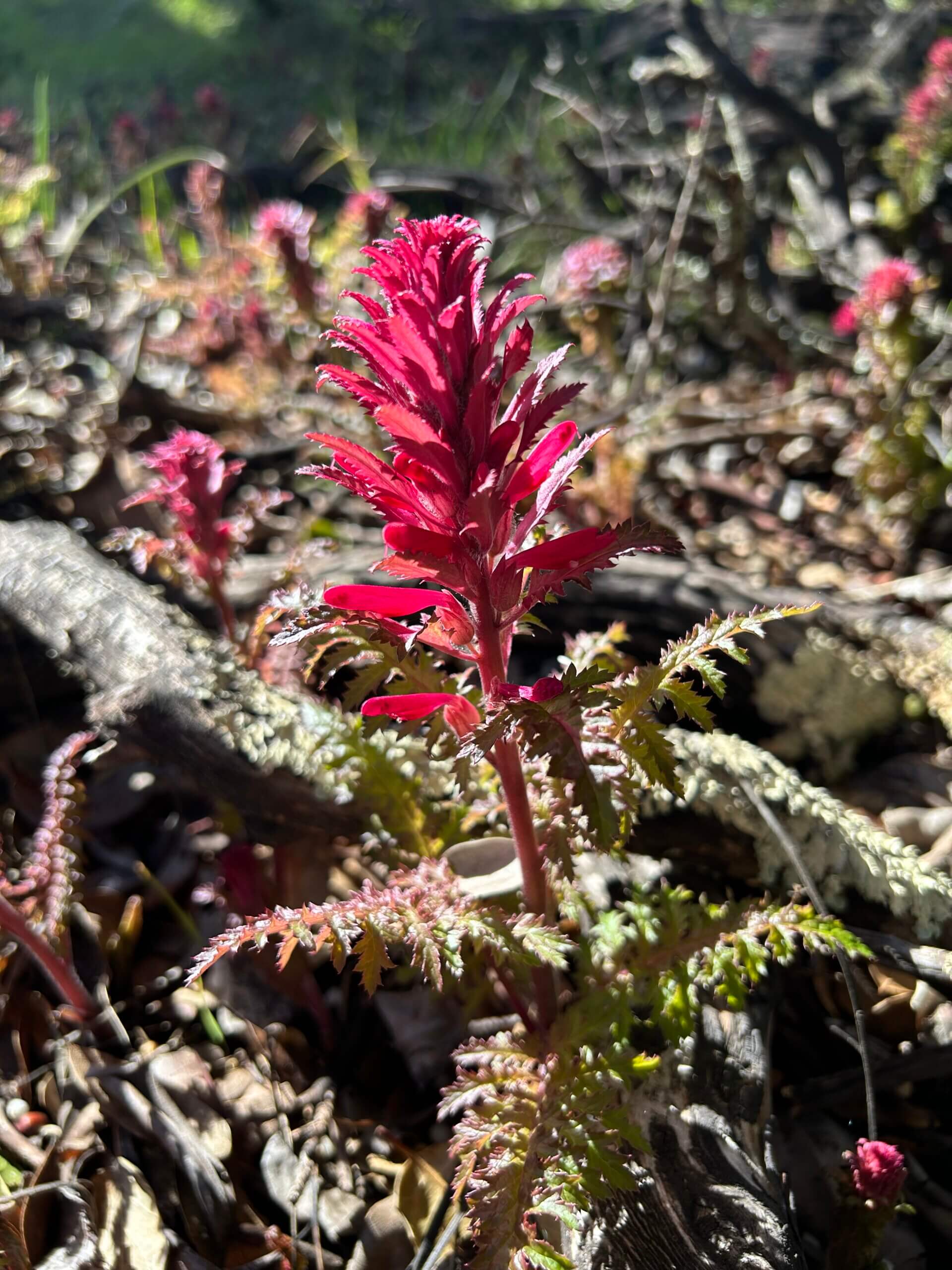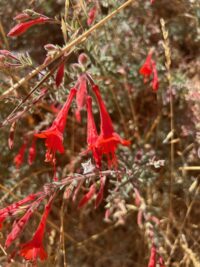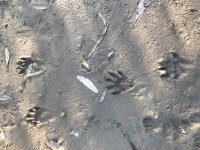
A flash of red springing from the forest floor or a dash of pink jutting from a rocky outcrop always stops me in my tracks. For years, I’ve been taking pictures of incredibly beautiful and unique wildflowers during my walks and hikes in Sonoma Valley and beyond. More than 350 species of wildflower are found in our region. There are far, far too many for me to ever compile or even identify.
Whether you seek them out or just enjoy their beauty, we are blessed with a cavalcade of wildflower color in Sonoma Valley. If you’re like me, now is the time of year when the tension is building for the wildflower season ahead: Will it be a superbloom this year? No one really knows.
While I do spend time identifying wildflowers and birds now that I’m retired, for decades I never did. From year to year I couldn’t remember what was what. Probably the first flower I ever remembered was the shooting star. Its lavender petals and pointed arrow-like shape stand out in the grassy fields where they usually grow.
When I was in Australia, I fell in love with the fringe lily, a tiny purple blossom that grows like a bush with three petals and three sepals fringed with tiny purple hairs like a boa. Couldn’t forget that one!
During COVID lockdown, I stumbled upon a rare wildflower originally botanized in our very own Sonoma Valley. The Sonoma beardtongue is a subspecies of penstemon collected by UC Berkeley botanists on Mt. Hood in 1891! With its tubular red petals and mouth-like opening, it grows in rocky areas in Sonoma, Lake, and Napa counties – where I found it on the Palisades Trail at Louis Stevenson State Park. I was elated to find its history, confirmed by an expert.
Recently up on the Bartholomew Park Winery Trail, clusters of the maroonish red Warrior’s Plume spread thickly along the trail’s edge and into the landscape. Among the early bloomers, the bristly petals and fern-like leaves added a wash of color to the base of red-barked manzanita, rusty madrone trunks, and gray old oaks. The shape and size is similar to the red Indian Paintbrush that tends to bloom later. The Warrior often attaches to the roots of other plants for nutrients and water, but can also survive without doing that, so is called a hemiparasite. But I don’t plan to get too much into the weeds here!
As I was admiring the Warrior’s Plume, a sudden cuk-cuk-cuk-cuk-cuk from above got my attention. A moment later, a big black and white woodpecker with a red cap flew down in a flash ahead of me. Wow – a pileated woodpecker – my favorite! What a surprise to see this magnificent bird. It’s not uncommon around here but you usually hear them, not see them. What a wild Valley!
Teri Shore is a long-time environmentalist and journalist who has lived in Sonoma Valley for more than three decades. She is an avid hiker, backpacker, and wilderness advocate. As an environmental campaigner, she championed winning campaigns to preserve greenbelts and open space, create safe havens for endangered species, and clean up marine pollution for non-profit advocacy groups.






Be First to Comment